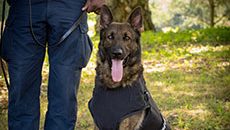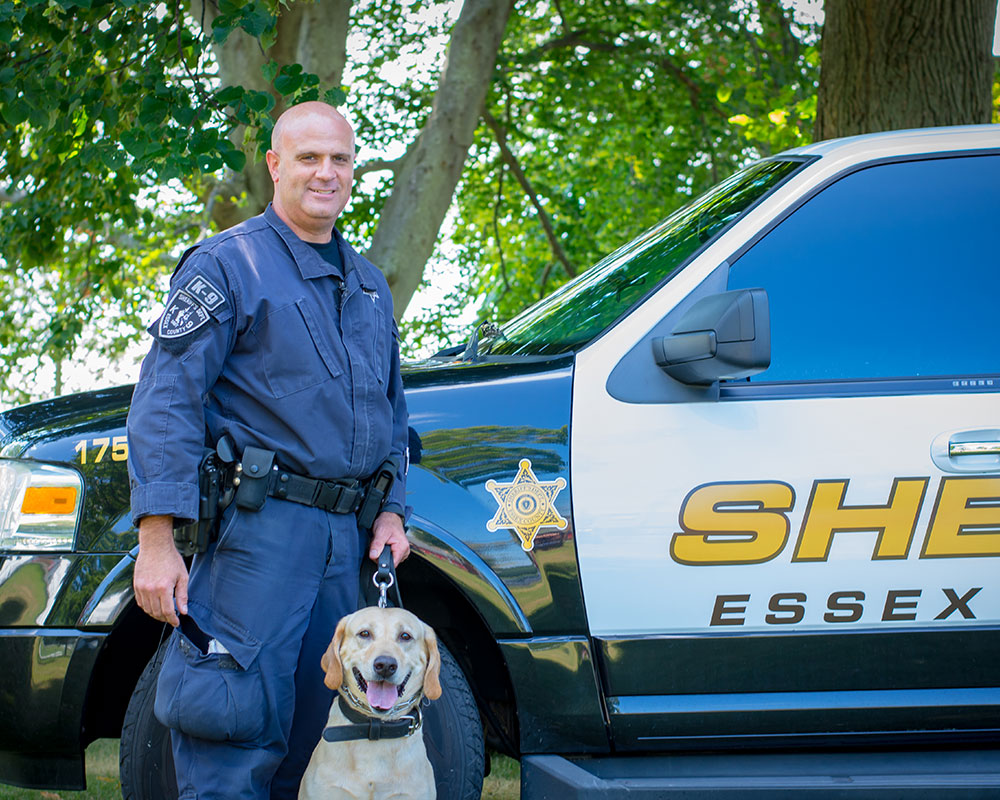Sgt. Scott Sousa and K-9 Patton of the Essex County Sheriff’s Office. (Jay Saulnier photograph for WHAV News)
WHAV is saluting local and state K-9 officers and their four-legged partners in a special series. Listen to the special Dog Days of Summer series Monday through Friday, at 97.9 WHAV FM. The special series is sponsored by the Law Offices of Joseph C. Edwards, Neptune Uniforms, Quinn’s Canine Café and Riverside Veterinary Clinic.
Twenty years ago, the currency of choice behind bars was cigarettes. Now, Essex County Sheriff’s Office K-9 Sergeant Scott Sousa says it’s all about fentanyl and suboxone.
Under the direction of Essex County Sheriff Kevin F. Coppinger, 24-year jail veteran Sousa and his K-9 partner sniff out drugs in several area facilities including the Middleton House of Corrections and its offshoot in Lawrence called “The Farm.”

Sgt. Carl Cox and K-9 Kona. (Click for larger image)
As drugs become more dangerous, Sousa has taken special precautions to protect himself and his four-legged partner, a Labrador retriever named Patton, from the hard stuff. Sousa focuses Patton’s efforts on the movements of inmate workers who try to transfer drugs through the jail’s laundry or library, for example. Sousa also conducts spot-checks on random inmates, keeping an eye on their behavior toward Patton as a clue.
That attention to detail, says Sousa, helps the Middleton jail maintain a high rate of success compared to other facilities when it comes to contraband.
When fentanyl is found, the K-9 team leans on haz-mat group Trauma 24 to sanitize the areas involved. Sousa always assesses a scene for safety before letting Patton in. Sousa also wears special chemical-resistant gloves, and—when necessary—outfits his K-9 partner with a bulletproof vest furnished through a donation from Vest-a-Dog.
“In the old days, when I first started (they’d say) ‘Have an inmate clean it up,’ but it’s not like that anymore. It’s a lot safer, and I feel safer and talking to other department, we have drugs get in, but not as much as in other facilities,” the sergeant told WHAV. “I’m pretty proud of our unit.”
Since 1986, the K-9 unit has grown to include 15 dogs and their handlers, Sousa said. Patton is the team’s sole Labrador—tasked with people searches—while his German shepherd and Belgian Malinois coworkers handle cell searches.

